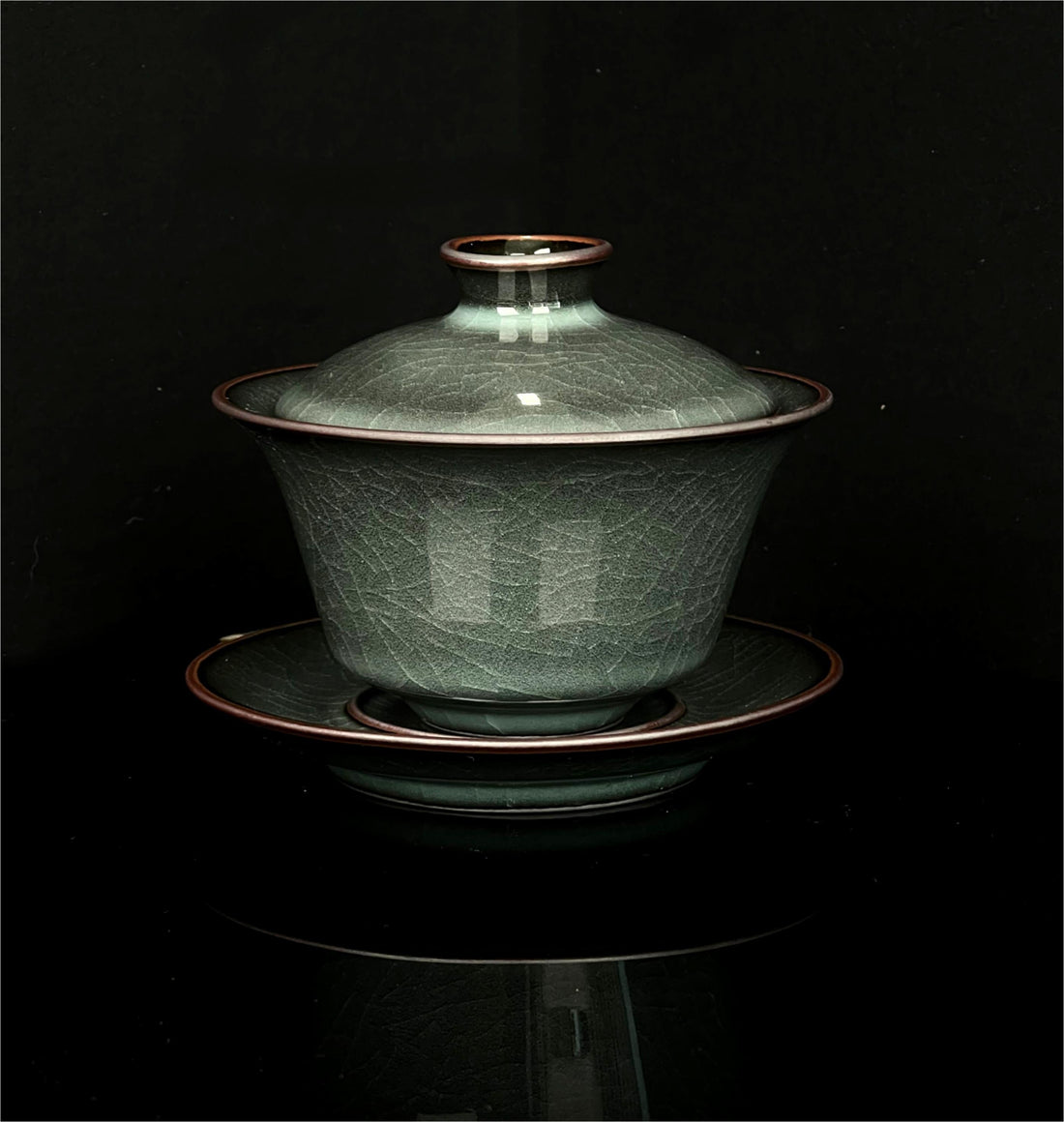
Introduction to Celadon Ge Kiln
Ge Kiln is one of the five great kilns of the Song Dynasty in China, renowned worldwide for its unique glaze color and crackle texture. Ge kiln is considered a treasure in the history of Chinese porcelain due to its ancient, elegant style and superb craftsmanship. The Five Great Kilns (五大名窑) of the Song Dynasty are considered the most important and influential kilns in Chinese porcelain history. Apart from the Ge kiln, the other four are:Ru kiln, Jun Kiln, Ding kiln, Guan Kiln.
Ge kiln has a unique glaze color, mainly gray-green, pale yellow, and iron green (dark green), with a deep and ancient tone that evokes a strong historical feeling. Secondly the glaze surface often features fine, crackle patterns, creating a “golden thread iron line” effect, adding depth and artistic charm to the porcelain. Thirdly the glaze of Ge kiln is smooth and delicate to the touch, with a soft sheen, offering high aesthetic value.
In fact, Ge kiln belongs to the series of Celadon. In China, people are accustomed to dividing celadon into Ge kiln and Di kiln.
So What is the different between Ge kiln and Di kiln? Why Ge kiln is one of the Five Great Kilns while Di kiln is not?
1. Origin and Historical Background
Ge Kiln: The Ge kiln, often associated with the Song Dynasty (960-1279), is considered one of the "Five Great Kilns" of the period. While the exact location of the Ge kiln remains uncertain, it is believed to have produced some of the most coveted celadon porcelain of the time, known for its beautiful glaze and crackle patterns. The Ge kiln was known for its relatively small-scale production, which added to the rarity and value of its pieces.
Di Kiln: The Di kiln, on the other hand, was also part of the Song Dynasty’s porcelain scene but was more closely associated with the Jingdezhen area (famous for its porcelain throughout Chinese history). The Di kiln was known for producing high-quality white porcelain and was particularly noted for its smooth, white surface and fine glaze.
2. Glaze and Color
Ge Kiln: Ge celadon is famous for its grayish-blue or pale green glaze with a distinctive crackle texture. The crackles on the glaze form a pattern that is often described as "golden thread" or "iron wire" because of the fine, spiderweb-like cracks that develop. The colors are subtle and soft, evoking an ancient, serene aesthetic.

Di Kiln: Di kiln porcelain, by contrast, is typically known for its white glaze with a slightly off-white or ivory tone. The Di kiln’s products were often smooth and lustrous, and they lacked the distinctive crackle texture that is so characteristic of Ge porcelain. Di porcelain was often more minimalistic, focusing on purity and simplicity.

3. Texture and Surface
Ge Kiln: The hallmark of Ge kiln ceramics is the crackled glaze, which adds texture and depth to the porcelain. This feature gives the pieces a distinctive appearance and adds to their aesthetic appeal, making them feel both ancient and sophisticated.
Di Kiln: Di kiln porcelains were often known for their smooth, fine surface without crackles. The glaze was usually thicker and more even, giving the porcelain a polished and refined look.
4. Craftsmanship and Decoration
Ge Kiln: The Ge kiln is celebrated not only for its glaze but also for its intricate shapes and forms. The pieces were often finely crafted with a natural, elegant simplicity in their design. Some Ge pieces had subtle carving or low-relief patterns, but the main focus was on the beauty of the glaze and the natural qualities of the porcelain itself.
Di Kiln: Di kiln porcelain was also refined and delicate but had less decorative work compared to other kilns of the time, focusing more on clean lines and simple forms. The emphasis was on creating a pure, smooth finish rather than detailed surface decoration.
5. Artistic and Historical Significance
Ge Kiln: Ge porcelain is considered one of the most coveted and rare types of porcelain from the Song Dynasty. Due to its relatively limited production and highly desirable crackle-glazed finish, it is considered a precious collector's item. Ge celadon’s distinctive glaze and texture make it highly valued in the world of Chinese antiques.
Di Kiln: Di porcelain was also highly esteemed, especially for its pristine white quality. Though not as rare as Ge porcelain, Di kiln pieces were prized for their purity and subtle elegance, with Di kiln porcelain still being highly regarded among collectors of Song Dynasty ceramics.
In Gerneral , the Ge kiln is considered one of the Five Great Kilns primarily due to its unique crackle glaze, the rarity of its production, its high aesthetic value, and its cultural significance in Song Dynasty history. The Di kiln, while notable for its white porcelain, simply did not stand out as much in terms of aesthetic innovation or cultural impact, which led to it not being included in the prestigious group of the Five Great Kilns.
Thus, the Ge kiln’s combination of rarity, beauty, and cultural significance secured its place among the finest kilns in Chinese history.
